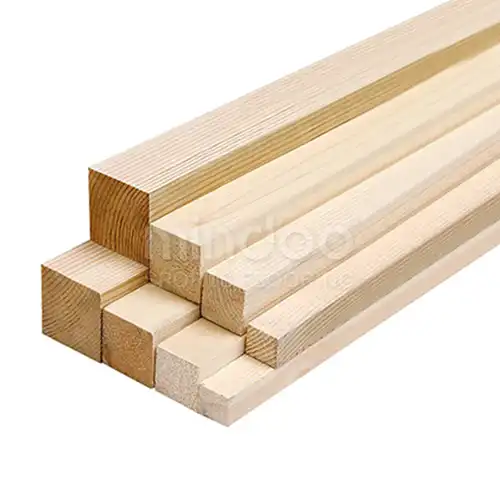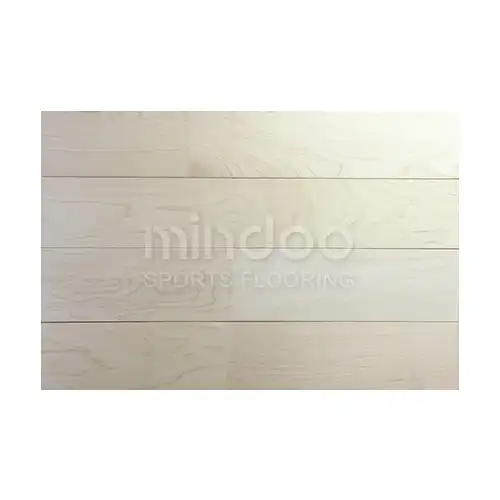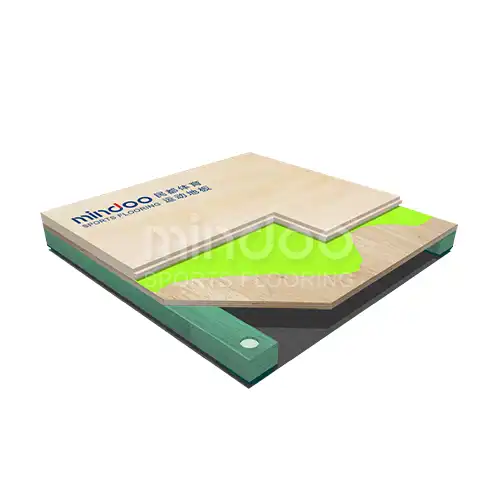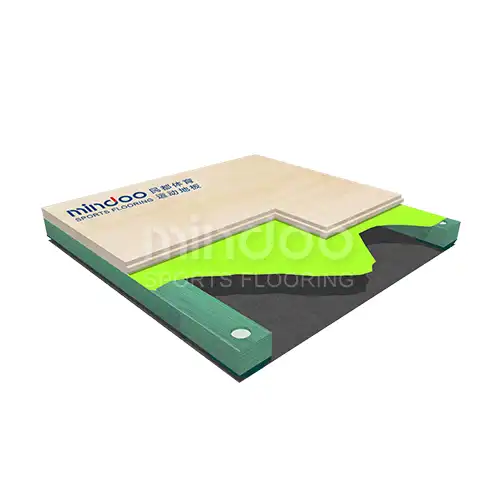Which is better for your venue, hardwood sports flooring or rubber flooring?
Hardwood sports flooring and rubber flooring are commonly used in different types of sports venues, each with its own unique physical properties and suitability for various activities. Below, we will compare the two based on several dimensions, including performance, comfort, safety, and durability.
Hardwood Flooring: The Preferred Choice for Basketball, Badminton, and Indoor Volleyball
Hardwood sports flooring is typically made from materials such as maple or oak, known for their high strength and excellent elasticity. It provides athletes with a firm, smooth surface, making it especially suitable for sports that require quick movements and precise control. For example, hardwood floors are commonly used in basketball courts because they offer the right amount of bounce and support for fast-paced action. According to studies, the elasticity and friction of hardwood flooring help reduce the impact forces when athletes pivot or jump, lowering the risk of injury.
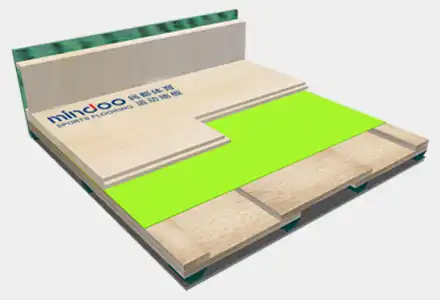
In addition to performance, hardwood floors have significant aesthetic value. Their natural grain and color contribute to the visual appeal of a sports venue, which is why they are often used in professional arenas and major competitions. Furthermore, hardwood flooring is highly durable and can withstand frequent use. However, over time, it requires regular waxing and refinishing to maintain its performance.
Rubber Flooring: Ideal for Gyms and Multi-Function Sports Venues
In contrast to hardwood, rubber flooring has entirely different physical properties. Known for its excellent shock absorption, wear resistance, and cushioning effect, rubber flooring is the material of choice for gyms, fitness centers, and multi-purpose sports venues. Rubber floors provide great traction, helping to reduce the risk of slips and falls, and their elasticity puts less strain on the knees and joints, making them ideal for extended, high-intensity training sessions.
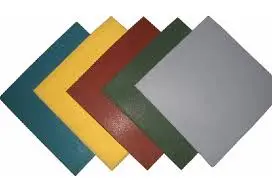
Rubber flooring excels in environments like fitness centers, where it can effectively absorb the impact of heavy weights dropped during strength training, protecting both the equipment and the flooring itself. It also helps to minimize noise produced by equipment, such as treadmills or free weights, contributing to a more comfortable training environment. Additionally, rubber floors are easy to clean and maintain, requiring only regular wiping, and they are extremely durable, making them ideal for high-traffic areas.
Key Difference: Bounce vs. Comfort
The fundamental difference between hardwood and rubber flooring lies in how they support athletic movements. Hardwood floors offer a higher degree of bounce, which is crucial for sports like basketball and badminton that demand rapid directional changes and elevation. On the other hand, rubber flooring is focused on reducing impact and absorbing vibrations, making it more suitable for low-impact exercises or repetitive training, such as weightlifting or yoga.
